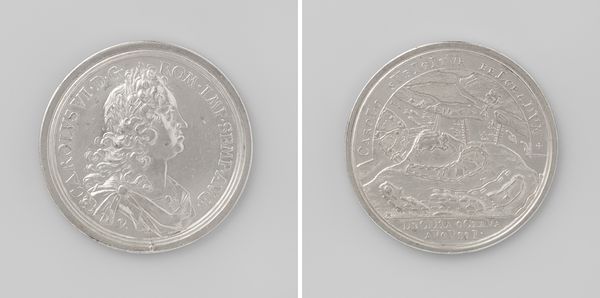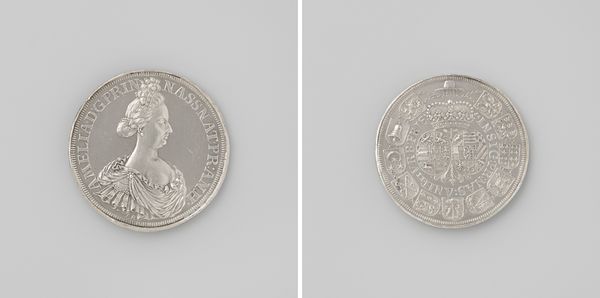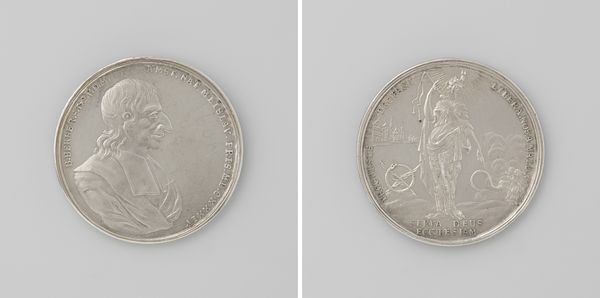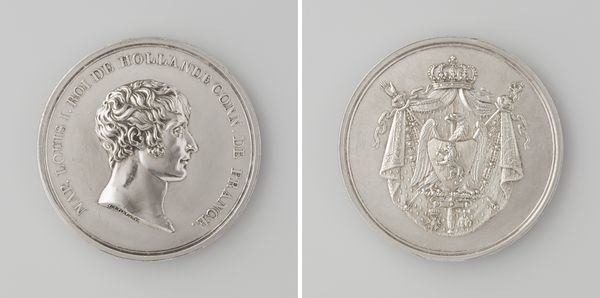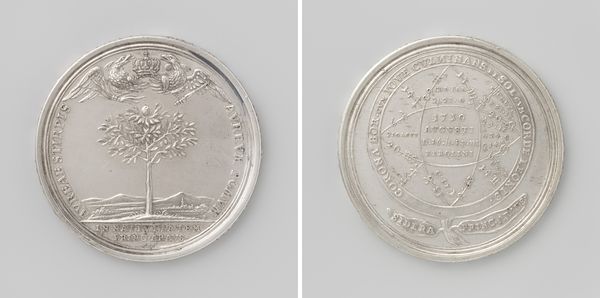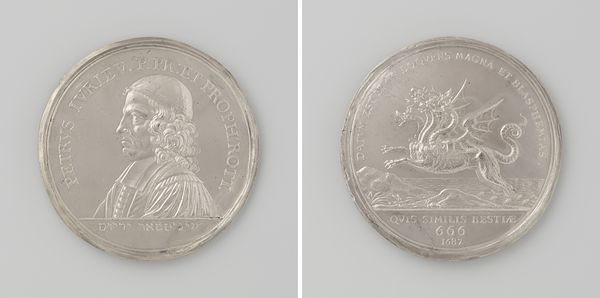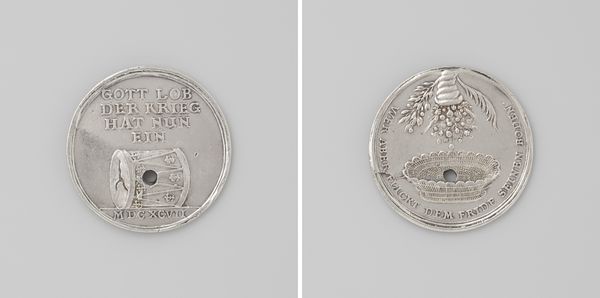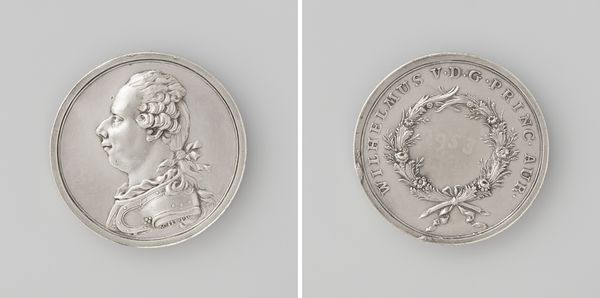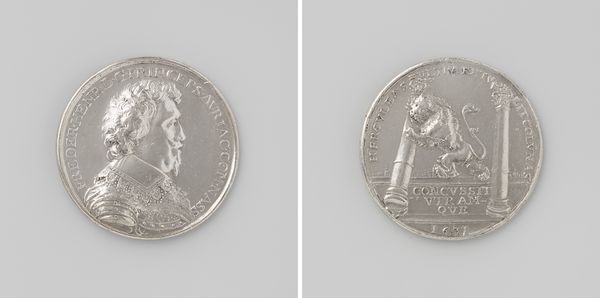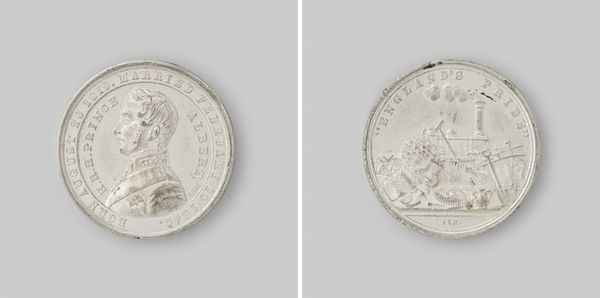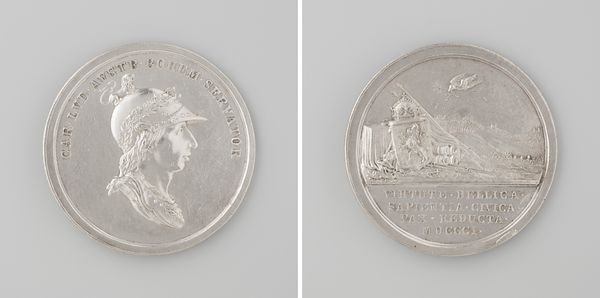
metal, relief, sculpture
portrait
metal
relief
ancient-mediterranean
sculpture
Dimensions: diameter 5 cm, weight 45.74 gr
Copyright: Rijks Museum: Open Domain
Editor: This medal, created in 1687 by Philippe Roëttiers, portrays Jean-Ferdinand van Beughem, Bishop of Antwerp. It seems straightforward—almost bureaucratic in its depiction of status and power. What else can we uncover in this seemingly simple relief? Curator: The portrait on one side and the heraldic shield on the other act as visual anchors to a complex network of social and religious authority. How does this pairing make you feel? Editor: It feels very calculated. Almost as if identity is tied to your social rank, and this piece exists only to prove your power and family ties. Curator: Indeed. It is calculated, yet consider that heraldry wasn’t merely about showing off lineage. Each symbol within the coat of arms -- its colors, creatures, and shapes-- encodes history, alliances, and specific qualities associated with the family. It is cultural memory, concentrated in an image. Editor: So, reading the shield is like reading a historical document in symbolic form? Curator: Precisely. And note how the bishop's vestments also function symbolically, connecting him to a lineage of religious authority that transcends his individual life. Each garment, each detail, speaks volumes to those initiated in the visual language. What does this connection evoke in you? Editor: A sense of immense responsibility. Both for the person and their lineage, whatever it may be. There is cultural weight attached. Curator: Exactly! The symbols remind us how images create an emotional bridge to the past. The medal isn't just an object; it’s a keeper of collective memories. Editor: I now see how seemingly straightforward symbols can hold layers of meaning about cultural continuity. Thanks!
Comments
No comments
Be the first to comment and join the conversation on the ultimate creative platform.
